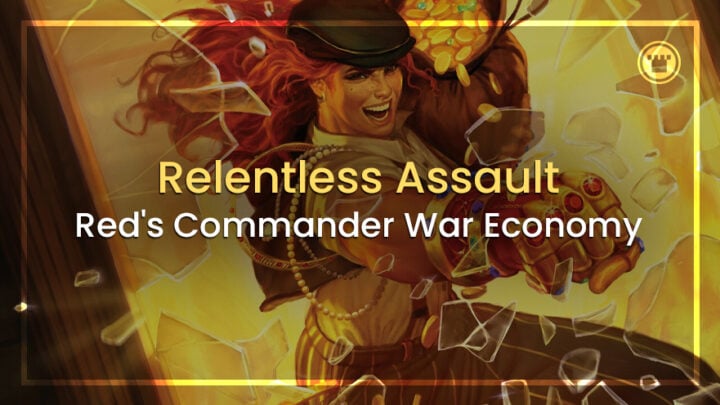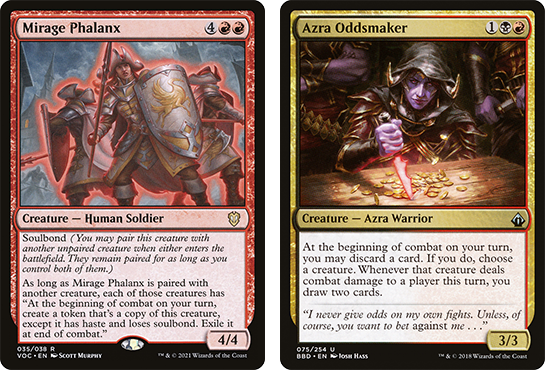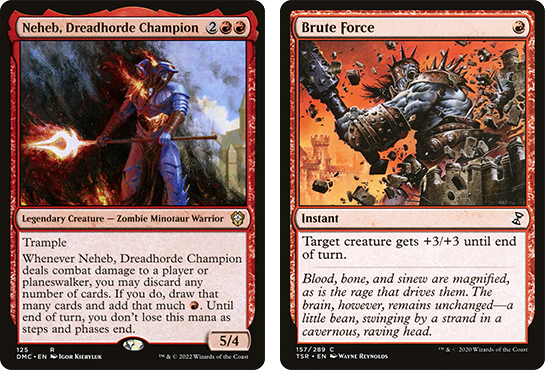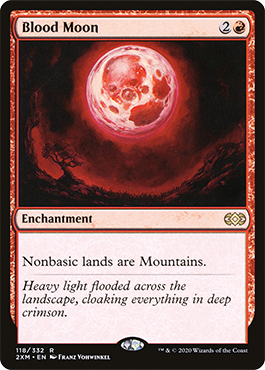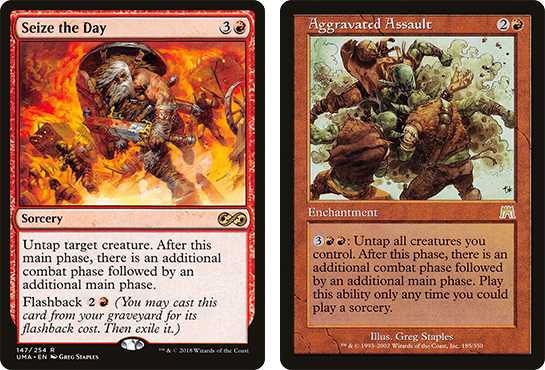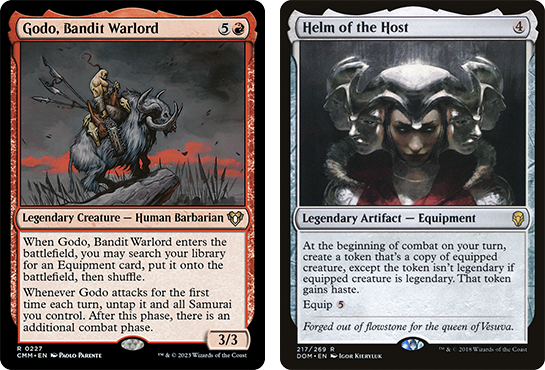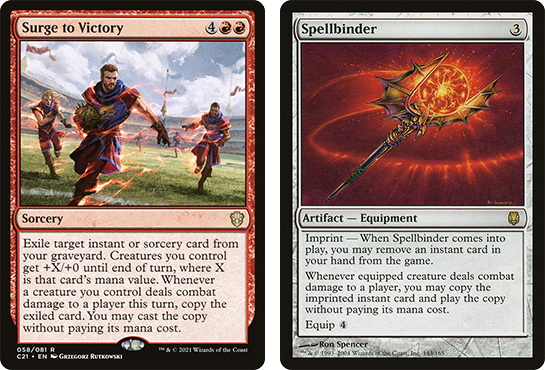Anyone who’s seen enough spy movies or political dramas has heard the line: war is brutal, but it’s good for business. War allows you to capture territory, resources or valuables from your enemy as spoils of victory, and as history’s oldest jobs program it often sparks a boom in national economies.
This thinking doesn’t typically apply to Magic, where combat is about sacrificing your resources to try and win (or just stay alive in) the game. But over the last couple of years, Magic’s most aggressive and combat-happy color has been steadily gathering the tools to change that.
Red decks can now treat the combat phase as a reliable and explosive economic engine – and with how potent and synergistic this gameplan is, I’d argue it should already be that color’s default identity.
The Mercenary Mindset
So how do we start to turn a profit in the combat phase? As usual for Commander, we’ll mostly be setting up triggered abilities to give us stacking payoffs for doing what we’re already good at.
Wizards very often ties the most impactful triggered abilities to combat-related conditions as a balancing technique; this forces the player to take risks and interact with opponents to get their reward. More importantly, triggering such abilities more than once a turn (and potentially comboing off) is difficult and resource-intensive. But if you have enough such triggers to justify building your entire gameplan around them, that equation can still end up favoring the red deck.
Beginning of Combat Phase
It has become more common for cards which might once have triggered their effects at the beginning of your upkeep to instead trigger at the beginning of combat.
This is a very stable kind of trigger condition – we essentially can’t miss it. On the other hand, our only real way to multiply its impact is those expensive extra combat effects. Wizards have also started to use “beginning of your first combat phase” to prevent even those shenanigans. Nevertheless, the stable income from these triggers is great for getting our war economy off the ground.
Given how extra combat effects work, I’d argue we can also lump “beginning of main phase” triggers into this same category. The important part is that they trigger at the same time, and require the same supporting effects to multiply their value.
Declare Attackers Step
Another very reliable type of trigger, the key with these effects is to stay aware of all the subtle variations in wording. Some cards need to attack themselves, some scale with the number of total attackers or the number of different opponents being attacked. There’s even a few oddball triggers like “when this becomes tapped” which work out to be the same thing for our purposes.
The important factors are that we can generally guarantee triggering these effects every combat, but that they do imply a level of risk we have to manage. Finding cards which make attacking safer is one of the unique things we can do to improve our engine.
Combat Resolution
“Deals combat damage to a player” is the most common and least reliable wording for this sort of triggered ability. Attack triggers ask us to accept risk in return for value, but damage-to-player triggers force us to work for it – evading potential blockers and preserving our attackers to ensure they actually connect.
But the potential rewards for these efforts are princely. Wizards is smart enough to put the really high-impact resource generation on this kind of trigger, not the easier ones. So to make our war economy really boom, we’ll need to invest heavily in making these triggers as consistent as possible.
There are some other triggers tied to the results of combat which can be lumped in here. “Deals combat damage to a player or planeswaker” or just “deals combat damage” are generally easier to achieve; “attacks and isn’t blocked” is much the same, while “becomes blocked” can actually be harder!
Some triggers are worded to care about the amount of combat damage dealt, how many creatures dealt it, or how many players they dealt it to. These minor twists are of great interest to us, because they represent the potential for highly unique – and profitable – resource exchanges.
Barbaric Arbitrage
A lot of strategy in this format boils down to “how can I most profitably convert one kind of resource into another, into another, until I have enough of the right resource to win the game.” Red’s war economy is no exception. But few other decks compete with the kind of deals these ones can access, without even needing the bonus of a specific commander.
Our secret sauce is the ability to transform effects that Magic design considers cheap and accessible into more expensive and valuable things. Writers like myself love to point out the disparity in power between Ancestral Recall, Dark Ritual and Giant Growth. But if you can connect with Neheb, Dreadhorde Champion, suddenly your Giant Growth is granting all three of those effects for one mana!
This advantage is consistent across the board. Combat tricks are more efficient than mana rituals and draw spells, double strike is more accessible than ability copying, and it’s easier to take multiple combats than to take multiple turns. So long as we can reliably transform those combat-centric effects into more general value, our red deck stocks are going straight to the moon.
I won’t claim to have completely plumbed the depths of this card pool, but here are a few of the standout examples that your war economy can be built around:
Mana & Treasure generation:
Perhaps the most powerful and important category of effects. Extra mana is always great in Commander, but especially when there are multiple cards which let us take infinite combat steps so long as each combat generates enough mana to buy another one.
- The Reaver Cleaver
- Guild Artisan
- Sword of the Animist
- Sword of Feast and Famine
- Neheb, Dreadhorde Champion
- Neheb, the Eternal
- Professional Face-Breaker
- Cavern-Hoard Dragon
- Ancient Copper Dragon
- Goldspan Dragon
- Tesak, Judith’s Hellhound
- Diamond Pick-Axe
- Ognis, the Dragon’s Lash
- Grand Warlord Radha
- Savage Ventmaw
- Megatron, Tyrant
Additional card access:
The other obviously good payoff; the more cards we draw, the more mana we can profitably use and the more flexibly we can use it. Cards which let us play spells from graveyard or elsewhere are usually analogous to this, since they increase the number of cards available to us.
- The Belligerent
- Conspiracy Theorist
- Caves of Chaos Adventurer
- Fire Giant’s Fury
- Mask of Memory
- Azra Oddsmaker
- Flamewar, Brash Veteran
- Laelia, the Blade Reforged
- Amber Gristle O’Maul
- Commander Liara Portyr
- Kami of Celebration
Creature token generation and other damage increases:
Turning our combat potential into even more combat potential isn’t precisely what we’re looking for, but if we already have the means to convert those resources into cards or mana, then these effects are just taking an extra step to reach the same goal.
- Curse of Stalked Prey
- Goblin Rabblemaster
- Shared Animosity
- Roar of Resistance
- Staff of Titania
- Tilonalli’s Summoner
- Sword of Hours
- Veteran’s Armaments
- Anduril, Flame of the West
- Goro-Goro and Satoru
- Krenko, Tin Street Kingpin
The Forever War
I’ve been deliberately stepping around the most explosive aspect of the war economy so far, because I wanted to show that the resource generation aspect is worthwhile even if you’re just using it to play more and bigger cards post-combat like a traditional ramp deck. But once you’ve engineered your deck to generate resources from the combat phase, it’s hard to ignore that the upside of taking additional combat phases goes through the roof!
Not everyone wants to follow this path which essentially turns your red creature deck into an infinite-turns combo, and fair enough. On the other hand, Commander is often a combo-centric format even in casual play. If you feel like you need a faster and more reliable win condition than “fair” combat will allow, I find this to be a natural and fun escalation from classic aggro gameplay.
There are two slightly divergent paths to our goal of taking all the combats:
- Find a single repeatable combo, which generally also requires a certain threshold of mana-per-combat to maintain
- Play a higher density of one-off extra combat effects and enough draw/tutor to chain them together ad-hoc, somewhat like how traditional Storm combo works.
These paths can be combined without really conflicting, but given they need different support cards and deckbuilding choices to truly shine you might prefer to optimize one and ignore the other. Each has plenty of depth just within itself – as I am about to elaborate on.
Deterministic Combos
For the combo plan, the simplest outs are those which merely ask us to reach a certain threshold of mana-generated-per-combat, and then find the card which converts that mana into infinite combats. Hellkite Charger, Aggravated Assault, Najeela, the Blade-Blossom, and Waves of Aggression (assuming you can also draw enough land cards) are the major candidates here.
Special shout-out to cEDH classic Godo, Bandit Warlord; if you’re also playing Helm of the Host somewhere in your deck, you only need to meet a one-time mana threshold of 9R to cast Godo, tutor and equip the Helm, and immediately take all the combats.
There’s also a set of combo options which don’t place any demand on our capacity for mana generation. Instead, these tend to take a little extra setup to reach takeoff and require that we consistently deal damage to a player in each combat phase. Surge to Victory, Magar of the Magic Strings, and Spellbinder all win the game immediately if they can target or imprint an extra combat spell like Relentless Assault and then find a way to connect for their trigger.
Lastly, there’s a significant number of creatures with a finite ability to generate extra combats – which then becomes infinite if we have a way to “reset” that creature via flickering, bouncing, or killing and reanimating them. Bloodthirster, Akki Battle Squad, Port Razer, Aurelia, the Warleader, Combat Celebrant, and Eomer, Marshal of Rohan are some of the easiest to set up.
I would also lump in any other creatures which require some niche but achievable condition to make extra combats happen: cards like Lightning Runner, Anzrag, the Quake-Mole, and Moraug, Fury of Akoum (extra fun with Goblin Welder and artifact lands). We can even extend this to something like Olivia, Crimson Bride which automates the recursion requirement for the above creatures.
Non-Deterministic “Combos”
Like traditional Storm decks, for this plan we need to prioritize seeing as many cards from our deck as possible, and the ability to recur them.
The easiest way to consistently find our crucial extra combat spells is to have creatures which dig for (and maybe even cast them) as their combat trigger. This category conveniently includes a lot of eligible commander choices: Narset, Enlightened Master, Florian, Voldaren Scion, Ryan Sinclair, Jeleva, Nephalia Scourge, Commander Liara Portyr, Kylox, Visionary Inventor, Velomachus Lorehold, and Witch-king, Sky Scourge are all capable of doing the heavy lifting in this style of deck.
We can also use copy effects to help get more combats at a better price from the same number of extra combat spells. Just remember that while you can queue up as many extra combat phases as you like in one go, the same is not true for the “untap creatures” part of these spells. So you’ll need vigilance or another untap effect to properly leverage Reiterate or Storm King’s Thunder.
A Bloody Business
Extra combats have always been a noteworthy way for red decks to scale in Commander, but only in the 2020s have we seen new cards consistently push this resource-generation aspect into its section of the color pie. The subsequent opportunities for creative deckbuilding and powerful gameplay have really re-ignited my passion for the color.
Like Treasure in general, it’s now very difficult for me to go about assembling a red-centric deck without naturally incorporating these elements into my gameplan. That may not strike you as a good thing if you’re already sick of Treasure synergies dominating strategic considerations at your table. But compared to that omnipresent, homogenizing force I would at least say that the war economy is exclusive to red decks, and offers opponents a multitude of chances to interact and slow down its snowballing value train.
Overall, I look at the continued development of this theme as a huge paradigm shift for mono-red decks and even the red-inclusive color pairs. If you’re a fan of those color identities, it’s time to at least consider how you could fit some war economy cards into your existing lists – or just pick up a fresh copy of Jolene, the Plunder Queen and go from there!

Tom’s fate was sealed in 7th grade when his friend lent him a pile of commons to play Magic. He quickly picked up Boros and Orzhov decks in Ravnica block and has remained a staunch white magician ever since. A fan of all Constructed formats, he enjoys studying the history of the tournament meta. He specializes in midrange decks, especially Death & Taxes and Martyr Proc. One day, he swears he will win an MCQ with Evershrike. Ask him how at @AWanderingBard, or watch him stream Magic at twitch.tv/TheWanderingBard.

